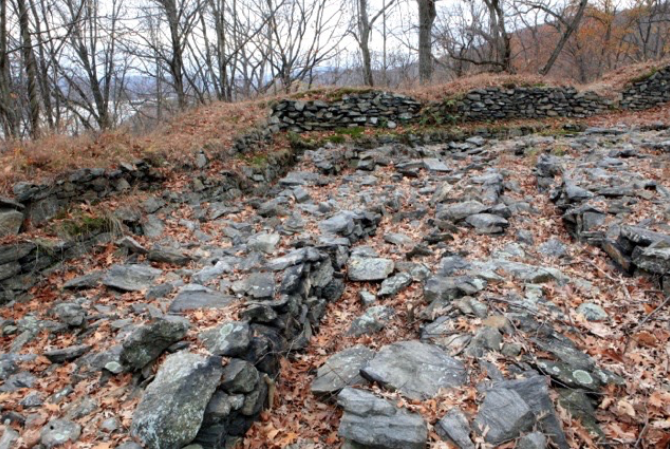Forts Wyllys & Meigs
FROM THE PERSONAL DIARY WRITTEN (1775-1783) BY THE AMERICAN REVOLUTIONARY SOLDIER – JEREMIAH GREENMAN

October 1780 W. Point “ This morning drew provisions for our men & pushed on to the landing opposite West Point, where continued till evening / then crossed the river…..Continuing at West Point which I found very much out of repair, & provision short, as no flour or meat was allowed to be delt out of the magazines….this day went on Guard at Fort Putnam / are informed that the infantry has had a scrummage with the enemy….Continuing at West Point ’til Friday the 27th in which time Nothing Remarkable happened…No barracks being for the officers, we moved our marques under the Lee of Fort Clinton, where we built fireplaces and sealed it within with boards which made it very comfortable.”
November 1780 W. Point….”by deserters are informed that Sir Harry Clinton had sailed with a squadron for Virginia, & had arrived there & disembarked his troops, but on the news of the arrival of the French Fleet he embarked and sailed for Charlestown.. This day went on guard at Fort Willis & very cold….some small spits of snow.”
On the high ridgeline in the Lusk Housing Area are remnants of Forts Webb, Wyllys, and Meigs, designed and constructed under the supervision of Polish Engineer Colonel Thaddeus Kosciuszko in 1778 to secure the southern approaches to Fort Arnold/Clinton on The Plain and assault by land from the west. General George Washington, Commander in chief of the Continental Army, inspected these very fortifications on several occasions throughout the war. Individual forts and redoubts were generally named for the officers whose regiments completed their construction.
Fort Wyllys was named for Colonel Samuel Wyllys who served at the Siege of Boston and the Battle of Long Island. Wyllys commanded the 3rd Connecticut Regiment from 1777-1781. Forts Wyllys and Meigs secured the southernmost tip of Lusk Ridge. It comprised a small fort and an artillery battery. In September of 1778, French engineer Louis Duportail inspected the West Point fortifications at the request of General Washington. In his report he noted that Fort Wyllys required 400-500 men for its defense.
Fort Meigs was named for Colonel Return Jonathan Meigs who commanded the 6th Connecticut Regiment. Meigs took part in Arnold’s march to Quebec and the raid on Sag Harbor and led his troops in the Battle of Stony Point. Fort Meigs comprised two batteries of artillery overlooking the road leading into the fortress from the south. All three structures could be supported from Fort Putnam if they were attacked.
Several of Meigs’ direct descendants are graduates of the United States Military Academy.

